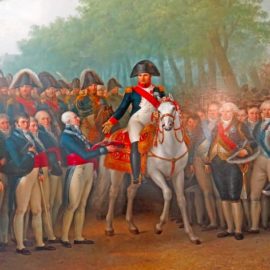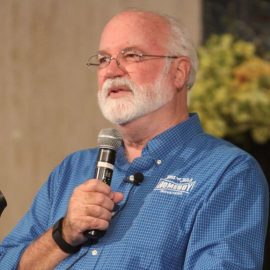

This article is an excerpt from the Shortform summary of "The Hiding Place" by Corrie ten Boom. Shortform has the world's best summaries of books you should be reading.
Like this article? Sign up for a free trial here .
Who was Eusie, also known as Meyer Mossel? How did the synagogue cantor come to seek refuge at the Beje?
Meyer Mossel was nicknamed Eusie when he lived in Corrie ten Boom’s home. He was a high-risk Jewish man because he had distinct features that made him stand out.
Read about how Eusie came to live at the Beje and his relationship with the others in the home.
How Did Eusie Come to the Beje?
In 1943, a Jewish man named Meyer Mossel, who had been a synagogue cantor in Amsterdam, came to live at the Beje. Mossel had been deemed a high security risk for operators of Haarlem safehouses due to the fact that he “looked” especially Jewish—he had sharp and distinct Semitic features that members of the Resistance feared would make him difficult to pass off as Gentile. But Corrie was unwilling to turn away Mossel, whom she christened (quite literally) on his false paperwork as “Eusebius Smit.”
Getting Along With Everyone
“Eusie,” as the family at the Beje came to call him, was a warm and benevolent presence in the home. He delighted everyone with his humor and cheerfulness, despite the obviously fraught circumstances. He struck a particular chord with Casper, with whom he shared an abiding love for the Judeo-Christian religious tradition. Indeed, on Eusie’s first night at the Beje, Casper said he would be honored if the cantor would lead the evening’s prayers.
He even had a jaunty attitude when it came to the violations of religious dietary laws to which he was sometimes forced to submit in hiding. The general privations of wartime plus the rationing system made it increasingly difficult to secure kosher food. One evening, the only meat Corrie was able to procure was pork. After trying a sausage with some initial reluctance, Eusie humorously declared that there was probably a Torah passage which justified eating non-kosher under such circumstances—but that he would wait to start looking for it until he finished his meal!
In early 1944, one of Corrie’s operatives, a man named Jop, was captured by the Gestapo. Rolf warned Corrie that this likely signaled the beginning of the end for her rescue operation—the Germans would get information out of Jop one way or the other that was almost certain to result in the arrest and capture of everyone involved. Corrie had been concerned about the growth of her operation for some time and how difficult and complex it had become to maintain it. With a network of dozens of people delivering supplies and information, only one domino needed to fall for the whole operation to collapse.
February 28, 1944
On the morning of February 28, 1944, Corrie was in bed, sick with the flu and flushed with fever. As she opened her fluttering eyelids, she thought she saw Eusie and two of the other fugitives scrambling into the hiding place. Dismissing it as a fever dream (they hadn’t planned a drill for that day), she drifted off back to sleep.
That was the day that the ten Booms were arrested. Eusie and the others hiding away were safe.

———End of Preview———
Like what you just read? Read the rest of the world's best summary of Corrie ten Boom's "The Hiding Place" at Shortform .
Here's what you'll find in our full The Hiding Place summary :
- Why devout Christian Corrie ten Boom decided to stand up to the Nazi occupation
- How ten Boom and the Jewish neighbors she was hiding were caught
- How ten Boom survived the concentration camp and left with even stronger faith






